#large marsh grasshopper
Text



A Large marsh grasshopper/kärrgräshoppa photographed at the Sätraskogen nature reserve in Stockholm, Sweden (August 30, 2013).
#large marsh grasshopper#kärrgräshoppa#stethophyma grossum#insects#sätraskogen#nature reserve#södermanland
270 notes
·
View notes
Photo
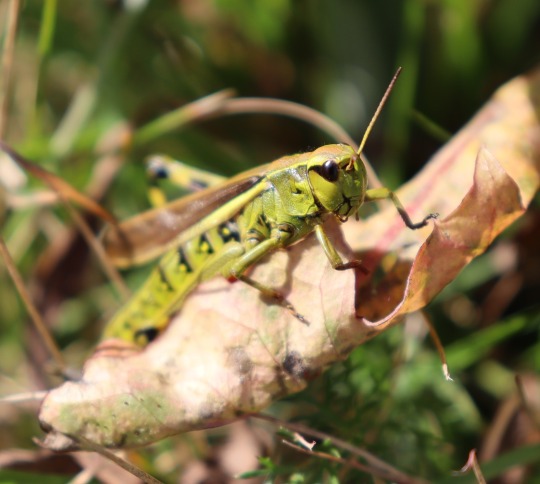
💚 Stethophyma grossum!
(photographed by me)
#📷#photo#large marsh grasshopper#acrididae#insects#irl insects#orthoptera#grasshoppers#I GOT A NEW CAMERA AND REALLY LIKED THIS PIC SO. SNIFFS#photography#little critters#entomology#animals
7 notes
·
View notes
Text
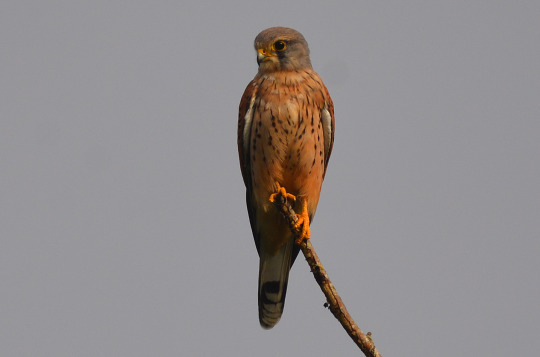


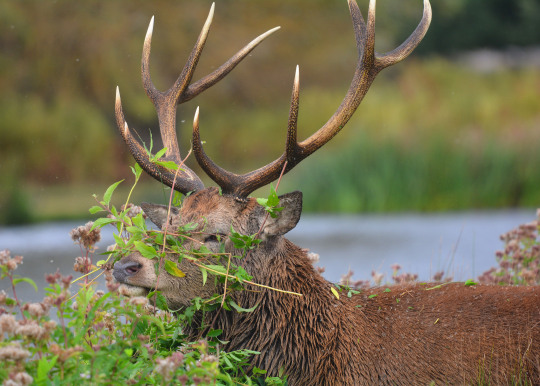
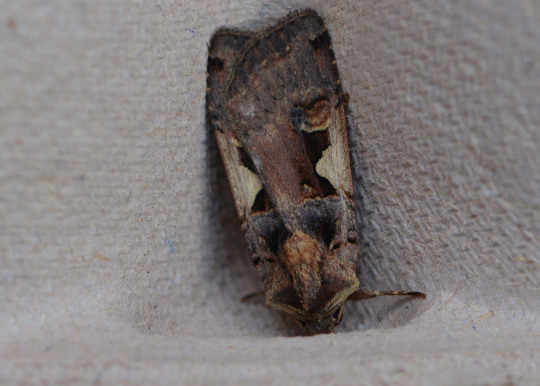
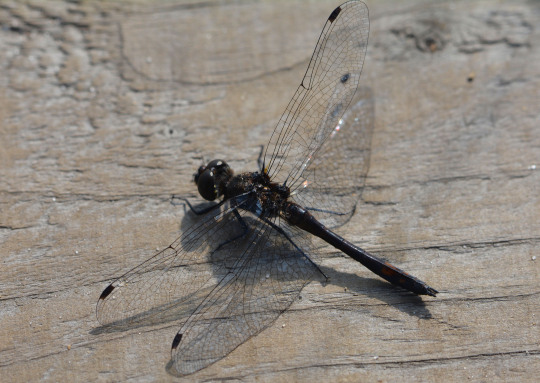
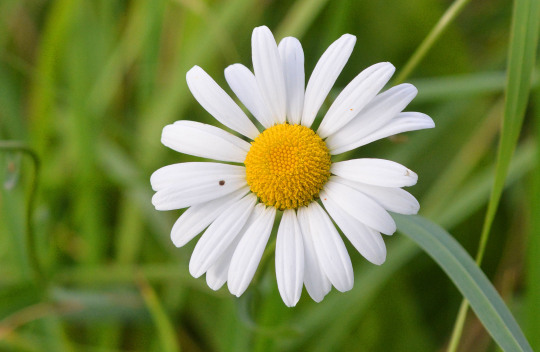
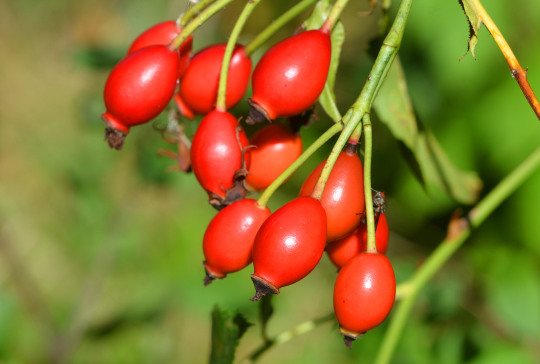

Nine of my favourite flora and fauna photos I took in September 2023 and month summary
The photos are of; Kestrel at Lakeside Country Park, Clouded Yellow at Old Winchester Hill, Osprey from a boat trip around Poole Harbour with Birds of Poole Harbour, Red Deer at Bushy Park, Setaceous Hebrew Character at home, Black Darter at Thursley Common, oxeye daisy and rose hips at Lakeside and spider with prey in the front garden.
As hoped in the midst of bird migration, changing times in the year and with this past week off work to pack with big trips September was a super and packed wildlife watching and photography month for me with so much seen and many places visited. For birdwatching migration was the theme of the month again as I picked up birds I needed Yellow Wagtail and Little Stint with a few seen for my year list, seeing the Red-necked Phalarope a week ago Pennington brought in by a storm was a massive bonus as a top species for my birding year and Monday's Minsmere trip paid off to allow us to see one we wanted to a Bittern. It's surely been my finest year of Ospreys with the amount I've seen and September contained much of the string of late summer/autumn sightings in the south which has been a phenomenal run for me. Other standout birds for me this month have of course been those two White-tailed Eagles seen on the boat trip too, Marsh Harrier, Peregrine, Hobby, a fair few Avocets, Ruffs and Curlew Sandpipers such fine and gorgeous waders in a strong wader month, Spoonbill and a smartly marked and colourful duck quartet of many Teals and Gadwall and Wigeon and Shoveler. Great Crested Grebe, Kingfisher, Great Spotted Woodpecker and Jay alongside Kestrel and Coot were patch highlights at Lakeside this month with Jays enjoyed elsewhere as we get further into autumn.
For butterflies the final piece of my extraordinary 2023 jigsaw was laid when we excitingly saw our first Clouded Yellow of the year on a hot and sunny day at the start of the month at Old Winchester Hill, an exhilarating moment with an exquisite species. Whilst the butterfly season quietened down overall in a month with a fair bit of hot and sunny weather a few species prevailed/re-emerged into my year with great and in places numerous times seeing Small Copper, Small Heath, Meadow Brown, Speckled Wood, Green-veined White, Peacock, Comma and of course Red Admiral this month with me making the most of Chalkhill and Adonis Blue in the Old Winchester Hill visit. For much of the month we did moth traps at weekends, this delve into an activity we hadn't done before allowed us to see many gems such as the Setaceous Hebrew Character, Small Blood-vein, Treble-bar, Garden Carpet, Lesser Broad-bordered Yellow Underwing, Large Yellow Underwing, Light Emerald, the Nutmeg, Vine's Rustic and loads of L-album Wainscots, Willow Beauty and Square-spot Rustics. It was fun doing this and the Snout was a key moth this month that came into the house.
Dragonflies and damselflies did take the baton from butterflies a bit as expected, with many wonderful views of Migrant Hawker, Southern Hawker and Common Darter such key species as the season goes on at a few places and Blue-tailed Damselfly and Common Blue Damselfly. Alluring miniature Black Darters at Thursley were a treat to see on Tuesday with them my first of the year my dragonfly and damselfly year list like my five others this year became my highest ever, and I was thrilled to see Emerald Damselflies again this year at Minsmere and Thursley this week. It was a really good month for areas of nature I'm less familiar with especially spiders with many seen well from orbweavers out the front to a harvestman at Thursley. Hornet, bees, wasp, beetles, ants, crickets and grasshoppers were highlights this month too.
It was a mega mammal month with Red, Fallow, Sika and Muntjac Deer, Red Squirrel and Water Vole massive species of the week off over the past week real big highlights of my wildlife year, and I saw Rabbit, Roe Deer and Grey Squirrel well this month. For flowers the season waned a little but species such as common toadflax, devil's-bit scabious, creeping thistle, wild carrot, pineappleweed, ragwort, water mint, common, musk and marsh mallow and heathers kept me going. Sundew was a blockbuster of my month this week at Thursley. In a bumper year for hawthorn especially I was very much taken by fruits this month enjoying loads of hawthorn and rose hips, blackthorn sloes, guelder rose berries and acorns especially. I also enjoyed seeing seed heads of the likes of carrot, hogweed and ragwort too. Shortly I shall do another post with nine of my favourite landscape and fungi photos I took this month and some thoughts. I hope you all have a good October.
#photography#clouded yellow#old winchester hill#kestrel#lakeside country park#osprey#poole harbour#setaceous hebrew character#eastleigh#black darter#thursley#thursley common#surrey#dorset#hampshire#rspb minsmere#suffolk#red deer#bushy park#london#oxeye daisy#spider#rose hips#september#white-tailed eagle#small copper#migrant hawker#light emerald#europe#england
2 notes
·
View notes
Video
Heron & Cattle on the Oare Marshes Kent by Adam Swaine
Via Flickr:
Herons often follow large animals like cattle to catch the insects they stir up..They look for grasshoppers and beetles that are raised by the animals
#herons#grey heron#marshes#oare#oare marshes#wetlands#walks#waterside#water#waterways#water birds#Waders#Birds#england#english#english birds#english landscapes#landscape#britain#british#british birds#animals#wildlife#wild#spring#spring in kent#Kent#kentish landscapes#rural#rural Kent
1 note
·
View note
Text
The Grasshoppers of Oaxaca
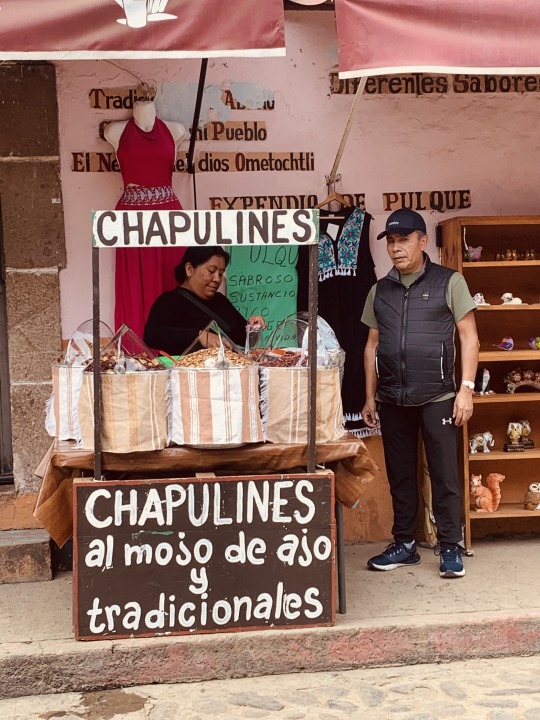
I have always been interested in the connection between food, history, and culture. I previously wrote about how the food of today can be a road map of past migration and cultural fusion, and how it can explain the evolution of a place like modern Mexico. Like communion in the Catholic Church, food can be a connection to our ancestors, a process and ritual that transcends time and generations. Food can be a bridge to the past…if we can find it.
Unfortunately we do not know a whole lot about what was eaten in Mesoamerica before the arrival of the Spanish. This is due in part to the great devastation brought by war, genocide, and disease during the Spanish Conquest, and approximately 90% of the population died by 1530. So much cultural knowledge and insight was lost. Another factor is that much of what the Spanish brought with them to the New World became common and integral to contemporary Mexican cuisine: Lime, honey, meat, and cheese.
We do have a few Spanish sources that wrote about what the Mexica ate before the Conquest. Hernán Cortés wrote in letters that Emperor Moctezuma’s feasts could be all day affairs, and Bernal Díaz del Castillo wrote in his book, The Conquest of New Spain, the following: “Every day they cooked fowls, turkeys, local partridges, quail, tame and wild duck, venison, boar, marsh birds, pigeons, hares and rabbits, also many other kinds of birds and beasts native to their country, so numerous that I cannot quickly name them all.” But this is of course describing how the most powerful man in the Triple Alliance ate on special occasions. The Great Speaker was hardly the common man. While Moctezuma may have eaten well, people had to do their best catching wild game like duck or raising the only two domesticated animals, turkeys and chihuahuas (which were considered food). How did the common people get enough protein to survive?
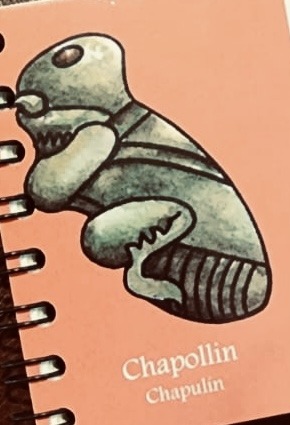
On a recent trip to Oaxaca, I was shocked by how common it was to eat grasshoppers (in Mexican Spanish chapulin, which comes from the Nahua word chapollin). They would sell them in large quantities on the street, or you could order them in dishes like quesadillas and omelets. From the U.S. perspective, eating insects seems strange, but is common in many parts of the world. They are quite common in a warm place like Oaxaca and not hard to find. People enjoy the crunch they provide, like one would from a potato chip. In Mexico City, you can order guacamole with chapulines. Many Mexicans are proud of the cultural heritage this food provides, and there is a sense it connects them to their culture and history and land. It may seem like a bizarre food to a foreigner, but it has some merits.

While eating grasshoppers in Mexico is both a thing of the past and the present, it may well be a thing of the future. Insects are a bountiful natural resource of animal protein in the world today, in part because there are a lot more insects than people. They do not have the carbon footprint of cows, chickens, and pigs, and do not require the time, space, or resources those animals require. In his collection of short stories Brief Encounters with Che Guevara, Ben Fountain writes the story of a PHD student that came to the jungles of Colombia to study a rare colony of parrots only to be kidnapped by a Marxist rebel force clearly based on FARC. At one point, the graduate student, John Blair, makes the case to his captors that eating insects is the future, because they are affordable and sustainable. The heavily armed rebels laugh in his sunburnt face. “We are not fighting for the revolution to eat bugs, cabrón,” they say dismissively.
And yet, here in Mexico, the future may already be here.
#grasshoppers#mexicanfood#mexicanhistory#mexico#mexicocity#oaxaca#cuidaddeoaxaca#travelgram#culturamexicana#mexicanculture#mexicancuisine#cdmx#comidaprehispanica
0 notes
Text

Sumpgræshoppe (Mecostethus grossus)
Large Marsh Grasshopper (Mecostethus grossus)
#Sumpgræshoppe#Mecostethus grossus#Mecostethus#Large Marsh Grasshopper#Græshoppe#Marsh grasshopper#Grasshopper#Orthoptera#Insekt#Insect#Sommer#Summer#Topbjerg
0 notes
Text
Flora and Fauna of Ard-galen
I originally had only the flora posted separately but I wanted to post this together for convenience and to add to the flora!
Flora and fauna of Arda masterlist
Originally requested by @polutrope
Disclaimer: I used both what we can extrapolate is likely indigenous to the region based on descriptions of the landscape and climate as well as my own headcanons and inspirations and reference books on similar habitats as well as books like The Atlas of Middle Earth and The Flora of Middle Earth
I really love working on and researching these! and as always feel free to ask more, even if I've already done a place I'd always enjoy going into more detail of tacking a more specific kind of life there
Ard-galen was the vast, green plains south of Angband and North of Dorthonion. It translates to Green Region in Sindarin. Little description is given to the details of its climate or biodiversity but based on its location and proximity to Dorthonion, it was likely a temperate region with cold seasons especially due to the proximity of the mountains.
The grasslands would be made up of a variety of grasses and other plants and would probably include fens, other areas of more moisture. Timothy grass, green foxtail, windgrass, larkspur, blue grass and other meadow grasses, sedge, cow vetch, yarrow, various brambles, wood reed, meadowsweet, marsh yellow cress, meadow rue, wild mustard, clover, and dog violet are all possible examples.
Dotted throughout the region there are probably streams including those that originate in the mountains. Wood sorrel, floating sweet grass, marsh bedstraw, soft rush, and various reeds may be found closer to the water
A variety of wildflowers also probably grow throughout. Goldenrod, certain species of lilies, summer pheasant’s eye, mayweed, cornflower, poppies, campion, and pilewort are all possible examples
Amphibians are likely more abundant than in Hithlum or Dorthonion due to the milder climate. Possible species include the moor frog, stream frog, marsh frog, perhaps a species of small tree frog (though of course these wouldn’t live in trees mostly, more likely smaller shrubs), smooth newt, brook salamander and alpine newt. Reptiles are less common. Pond slider turtles, common wall lizards, meadow lizards and perhaps small green grass snakes are among the few species.
Birds also differ than in surrounding regions because of the different type of landscape. Some examples include quails and peasants, stone curlew, kingbirds, gray, brown and woodchat shrikes, grasshopper warblers, yellowhammers, buntings and red footed falcons.
Larger mammals are uncommon though some do pass through along migration, grazing or hunting routes. Perhaps the fields of Ard-galen are included in the migration routes for woolly rhinos or another large, prehistoric creature.
Common rabbit, a species of badger, field mice, hazel dormouse, swamp cat and (European) wild cat, common genet, roe or fallow deer, and black foxes are some possibilities.
Even short lists of insects can be overwhelming but there are definitely pollinators like honey and bumble bees, wood white and small copper butterflies, etc.
I do like to think that perhaps creatures do adapt to the landscape once the worst of the toxins clear including creatures that have previously favored Angband for the volcanic landscape. I think life adapting to the destroyed land fits very well with other themes, including the Haudh-en-Nirnaeth regaining plant life in the middle of the desert.
note: of course this is just an overview as a complete list would be thousands and thousands of species! as always feel free to request more specific areas!
24 notes
·
View notes
Photo
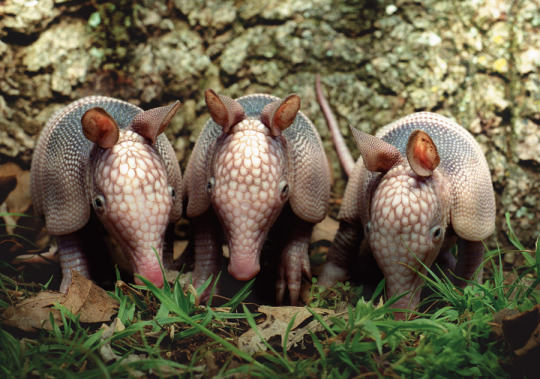
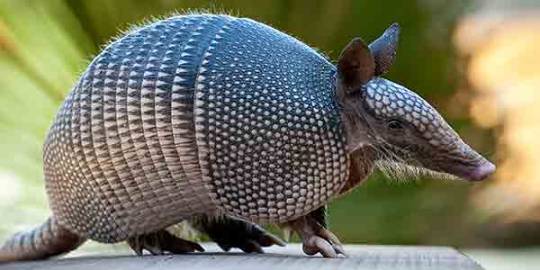

The Amazing Nine-Banded Armadillos
If you’ve ever been to the Americas or watched Tom Browning’s 1931 ‘Dracula’, you’ve probably seen the nine-banded armadillo (Dasypus novemcinctus). They’re native to South, Central, and southern North America, from Argentina to north Texas, and thus have the largest range of any armadillo species. They are limited mainly by cold weather, which they can survive for short periods by burrowing underground. Due to their large range, nine-banded armadillos thrive in a variety of habitats, including deciduous and tropical forests, grasslands, scrubland, and marshes. Although they are commonly associated with deserts, nine-banded armadillos are not found in dry areas with little water; they prefer to live near bodies of water or in areas with good yearly rainfall.
Although the most well-known characteristic of armadillos is their ability to roll into a ball, this is not an ability granted to all armadillo species. In fact, only two species of the 21 extant armadillos is able to completely curl up. The nine-banded armadillo, like many others, is unable to defend itself this way due to the many plates in its armor. The number of plates on d. novemcinctus is also variable, ranging from 8 to 11. The scales on the plates grow and wear continuously, providing a protection of thick keratinous skin. Overall, the shell can make up to 16% of the nine-banded armadillos total body weight, which can be from 8 to 16 pounds. Their shell also makes for poor thermoregulation, and as a result nine-banded armadillos have an unusually low body temperature of 86-95 degrees Fahrenheit.
As with many other armadillo species, d. novemcinctus is nocturnal and primarily carnivorous. Its main source of food is insects, including beetles, grasshoppers, arachnids, and earthworms. They have also been known to prey on anthills, and after having their fill, will roll in the dirt to dislodge any disgruntled ants defending their colony. When their preferred food is scarce, nine-banded armadillos will also feed on small lizards and amphibians, young mammals, bird eggs, and plant matter like fruit. Because they are mainly active at night, their eyesight is poor and they rely mainly on their sense of smell to navigate food, mates, and predators. In fact, the nine-banded armadillo’s sense of smell is so keen that it can smell prey 20 cm below the surface of the ground.
Nine-banded armadillos burrow not just for prey, but for nesting as well. In fact, most individuals have several burrows that they use for different purposes, each with several entrances. Typically nine-banded armadillos are solitary, and only nest together when breeding. This is also one of the only times they make sounds; a distinctive chucking Interestingly, after mating only a single ovum is fertilized, and then the ovum separates into four identical embryos. The quadruplets are born 4 months after mating, and are fairly well developed, although their armor doesn’t harden for several more weeks. The mother only provides milk for 2-3 weeks after her young emerge from the burrow, and within a year the offspring move on to establish their own territories.
Conservation status: not threatened. In fact, the population and range of nine-banded armadillos is increasing, particularly into North America. Although their need for water prevents them from entering the southwestern deserts, they have expanded their territory to the central and eastern United States. In some areas, they are considered an invasive species, although no research exists on their impacts in introduced environments.
#nine-banded armadillo#cingulata#Dasypodidae#long-nosed armadillos#armadillos#mammals#deciduous forests#deciduous forest mammals#tropical forests#tropical forest mammals#grasslands#grassland mammals#scrubland#scrubland mammals#south america#Central America#North America
61 notes
·
View notes
Text
Wildlife of the Scarred Wastes
Hey I put together a list of all wildlife found in Plague, for writing purposes. Because it's pretty unique from the rest of Sornieth. Thus can be a bit difficult to write for.
It's also interesting to note that most of the creatures can be found in other locations too, I picture the varieties found in plague to be more...plague-y. I hope this is at least a good jumping off point for you writers/worldbuilders!
Includes little personal notes here and there about possible uses, ecology and real-life equivalents, and interesting notes from the items bio too.
Everything under the cut. Long post ahead
Meat:
Panther Anole (Small, fool hardy, easy prey for hatchlings)
Plague Bat (Bat that carries plagues?? Probably a small snack for adults and a meal for hatchlings)
Satin Mouse (Magically charged mice, might have been introduced from Arcane)
Java Sparrow (Small songbird, Nutritious)
Shrew (Small and mole like, cannot be tamed)
Marsh Rabbit (Oily water repellent fur, probably like a softer beaver pelt. Decent meal. Probably farmed for fur)
Dappled Clucker (Chickens whose females brutally fight over males. Probably farmed for meat)
Steppes Box Turtle (known for it's shell pattern)
Musk Scrapper (Like a brown skunk, stinks but apparently the meat is incredible.)
Flecked Bushrunner (Type of quail. males race each other to impress females. Proabably a common type of wild game)
Wood Duck (Probably a common type of wild game)
Silver-Laced Rooster (There was a play about a rooster trying to woo a dragon. Ended poorly.)
Arroyo Toad (Most dragons are immune to it's toxin but Mirrors are allergic to it.)
Plantain Poacher (Type of squirrel monkey. Common pest that raids produce stores.)
Bush Rat
Wallaby (Probably a decent sized meal)
False Podid (Decent meal, cousin to common podid, tastes best when roasted in the shell)
White-Eared Hummingbird
Coral Snake (VENOMOUS. Rear-fanged. But edible to dragons if eaten carefully. Snakes store their venom in the head area. Body meat is generally fine.)
White Squirrel (Cannot jump, probably easy prey. Most likely is native to Ice)
Tokay Gecko (DEADLY. Covered in a potent poison from head to toe. (Note: real tokay geckos are not poisonous, just massive bitey assholes))
Bleeding Heart Crow (Only Males have the "Bleeding Heart" coloration)
Ferret (a treat for most dragons, might also be kept as pets and for hunting small game)
Sugarglider (Common pest in sugarmelon crops. might also be kept as pets.)
Bar-Headed Goose (Might be farmed for meat/feathers)
Hellbender (Massive salamander (one of the largest species on earth!))
Emerald Striker (VENOMOUS. Emeralds contain the toxin)
Silver Raccoon (Known to steal and hoard silver.)
Green Iguana (apparently very friendly and probably common pets (Important Note: Real green iguanas are NOT friendly and want nothing more than to whip you to shreds. Make terrible pets!))
Bog Canary (Song is apparently horrible, but plumage is pretty, might be kept as pets (Note: the art depicts a budgerigar not a canary))
Golden Reefprince (Regal and golden, best served to someone you're trying to impress. Probably farmed and marketed in the same vein as Valentine Roses)
Black Swan (Probably farmed for Meat/Feathers)
Green-throated Skink (More confident then it's cousin, probably more common to see skittering around in daylight)
Dustrat (Seen as vermin, a sign to clean your lair)
Banded Dart Frog (POISONOUS. However NOT deadly. Instead it's hallucinagenic. Probably farmed as an legal and/or illegal narcotic. Probably a big market for them.)
Collared Lemming (Probably has a local superstition about it staring into your soul and knowing all your secrets)
Webwing Alpha ( might be farmed for meat or plumage. Or kept as familiars)
Yellow-Throated Sparrowmouse (kept as Familiars. Plumage might be used in crafts)
Basilisk (Direct eye contact can turn dragons to stone. Probably Hunted as Big/trophy game. Also Kept as familiars)
Clown Charger (Skin is poisonous. Might be hunted as Trophy Game but not eaten. Also Kept as familiars)
Parasitic Fungus (Has mind controlling fungus, however fungus rarely takes. Also Kept as familiars)
Fungalhoof Qiriq (Leaves a trail of fungus where ever it goes, easy to track dangerous to hunt. Might be hunted as big/Trophy game or as possible rites of passage . Also Kept as familiars)
Roving Lionsnake (Large dangerous ambush predators that stalk long grasses. Might be hunter for trophy game or possible rights of passage. Also kept as familiars)
Murkbottom Gull (Common seabirds, most likely a common sight at waterways. Also kept as familiars)
Giant White Toridae (Large! Has Myths and urban legends surrounding it. Probably hunted as Trophy game or even rites of passage. Also Kept as familiars.)
Ultramel Amphithere (Amphithere displaying the "Ultramel" color morph. Probably popular pets. Also kept as familiars)
Auburn Woolly Walrus (Hostile due to chronic pain. Probably Farmed for meat and fur while also being hunted as big/trophy game. Also kept as familiars.)
Hooded Dodo (Completely blind despite three sets of eyes. Probably farmed for meat and feather. Also kept as familiars)
Infestation Hound (Wild ones are ambush predators, baiting and eating scavengers. Probably Domesticated by plague clans and bred then raised as hunting partners and companions. Kept as familiars)
Heartred Croaker (Meat is uniquely brown and green in coloration. Kept as familiars)
Mossy Cerdae (Healing magic-less Unicorns. Population is rising exponentially. Probably hunted for meat/fur/horns. Kept as familiars)
Hippojay (Might be farmed for meat or hunted as big/trophy game. Or kept as familiars)
Bluetail Skira (Blue algea clings to their tail fur causing the blue coloration. Might be farmed for meat or hunted like big game. Or kept as familiars)
Paddyfowl (Common predator to smaller amphibians, might be farmed for meat or plumage. Or kept as familiars)
Moordwelling Trunker (Displays are a lot like jousting. Probably farmed for meat. Or kept as familiars)
Glowing Pocket Mouse ( A light snack. Or kept as familiars)
Grey River Flight ( Probably farmed for meat and water resistant hide. Or kept as familiars)
Brown River Flight ( Probably farmed for meat and water resistant hide. Or kept as familiars)
Bearded Pupowl (Actually a vertebrate! Amphibian and probably distantly related to salamanders. Kept as familiars)
Aquatic Life:
Crawdads
Wetland Vampire (Leech)
Glass Minnows (maybe kept in dragon aquaria?)
Mussels
Clown Shrimp
Warmouth (A mid sized bass/perch-like fish, probably decent eating)
Wave Skippers (Flying fish?)
Sea Hare (Sea slugs)
Sunset Sea Dragon
Dumpling Squid (bio implies they’re eaten and dipped in sauce.)
True Rainbow Trout
Green Corydoras Catfish (tiny bottom dwelling catfish, maybe kept in dragon aquaria?)
Golden Cushionfish (Pufferfish)
Seabed Pincher (Hermit crab)
Blackwater Jester (Appears to be a cardinal fish of some sort)
SeaHeart (Some kinda urchin)
Aether Hermit
Black Maiden (type of Black Guppy, possibly poisonous? maybe kept in dragon aquaria?)
Ruby Tetras (possibly a red version of the blackskirt tetra, maybe kept in dragon aquaria?)
Blue Ring Octopus (DEADLY. Venom can straight up kill smaller dragons. Considered an accomplishment to catch and eat properly. Probably equivalent to Fugu.)
Striped biter (Similar to a cat shark in appearance. Apparently very common.)
Devilsnap (Apparently an oyster that bites back)
Blue Dragon Seaslug
Cobra Snakehead (mid-sized carnivorous fish)
Nebula Floaters (Jellyfish of some sort, very sweet may cause tooth decay)
Pond Slip (Come from dirty water, VERY important to clean)
Cinnamon Loach (Popular gift among the seafood eating dragons, may also be kept in dragon aquaria?)
Deviant Darter (Covered in pustules, looks plague-y)
Giant Isopod
Billy Bass (Breaks into song when taken out of the water, mid-sized fish probably decent eating)
Discus (Popular, beautiful, and challenging to care for in irl aquaria. Possibly kept as decorative fish for the upper class in dragon aquaria)
Four-Eyed Butterflyfish
Pincushion Urchin
Gaseous Megashrimp (Big, kept as familiars. this is speculation but depending on the size it may also be used as a seafood alternative to whole roasts like pig)
Skittering Megashrimp (See above)
Longjaw Lurefish (Based on the jawfish, probably much bigger. preys on birds)
Glow Star (glowing starfish. Glow fades when it leaves the water. Might make good underwater decoration)
Wave Sweeper (Patrols shallow waterway. Probably hunted for meat or ignored, Kept as familiars)
Plantation Pincher (Considered a rampant pest on farmland.)
Insect Life:
Fungus Cutter (Large fungivore ants)
Glade Swarmer (Builds large hives and defend it fiercely, disturbing it will end in either a feast or a healers visit)
Crop Cutter (Pests that can devour entire fields. Plant eater hate them while others feast on them.)
Maggot (common on the many festering corpses of the scarred wastes)
Harlequin Ladybug (perform intricate aerial acrobatics, can be challenging for hatchlings to catch)
Salt-Marsh Mosquito (Carry many diseases, numbers swell in summer)
Tachinid Fly (Their carapace can be ground into tincture and tonics with restorative capabilities. Valuable. Probably farmed for medicinal purposes)
Redwing Hopper (Spend most of their time gliding. low-flying dragons end up with face fulls of them.)
Greenworm (Blends in well and challenging to find)
Land Snail
Rainbow Grasshopper (Taste terrible. seems to be a common prank to tell younger dragons that they taste like rainbows.)
Tinder Bug (Tastes good if properly cooked, also effective tinder)
Earwig
Craftsman Brightback (Crafts intricate nests around spherical fruit, to which the fruit inside is eaten leaving behind the dried structure.)
Redknee Tarantula
Dusty Cicada (Collecting their shells and placing them in unexpected places around your den is considered a fun pastime)
Millipede
Wasteland Pauper (In an event known as the Blue Harvest vast numbers of this butterfly go migrating.)
Stinglash (DEADLY. Aposematic. Skull pattern on it's head is a threat display. When stinger is removed however it's considered a delicacy)
Shale Skitter (Pillbug relative. Completely flatten themselves when threatened)
Parasitic Grub
Red and Black Froghopper
Fever Fly (Ingesting this fly is fine. being bitten by this fly leads to fevers and muscle spasms (dancing!))
Two-Tone June Beetle (Best served lightly toasted)
Blackshield Cockroach (Fae use rocks to crack it's shell for eating.)
Yellow Jumper (Deadly? Very tasty apparently)
False Veneer Moth (Pattern on it's wings shines to distract predators)
Yellowtail Caterpillar (Commonly eaten in piles with pepper sauce, cucumber, rice, and wrapped in seaweed)
Orchid Beetle (Native to the Starwood Strand. gets its coloration from the plants it eats)
Water Bug
Catocala Moth (Cryptic patterning on wings)
Giant Prickly Stick Insect (Has a hard time find mates due to effective camouflage)
Autumn Pennant (Dragonfly. Scarce, only appears towards the end of autumn)
Sugarbee (Feeds on sugarcane. Popular as sweet treats. might be treated like candy to insectivores)
Firefly (Probably native to Fire. Has a crisp, crunchy texture with an extremely spicy flavor.)
Dead Leaf Mantis (Feeds entirely on brain matter. (braaains))
Hydra Scorpion (It's said that cutting off it's tail grows two more in it's place. Probably large and treated like big/trophy game. Kept as familiars)
Triple-Sight Firebug (Dragons closely bonded to this bug can use it's sight for short periods of time. Possibly used for rough reconnaissance. Kept as familiars)
Tufted Leaf Beetle (Pests. A swarm of these beetles can devour a field overnight. Kept as familiars.)
Tender Larail (Consumes all parts of a plant except seeds, which it carefully buries. Might be a Keystone species. Kept as familiars.)
Spoiling Scorpio (Probably large and treated like big/trophy game. Kept as familiars)
Plant Life:
Highland Dryleaf (Hardy. Tastes awful. Plentiful)
Marsh Choker (Named for it's choking pollen. probably grows in wetland areas.)
Desert Scrub (Plentiful. Tastes like dirt)
Diseased Fungus (Has a following that believe it tastes zestier than normal fungus. Probably cultivated or foraged for.)
Carnaval Tulip (Pretty, often in bouquets. considered by plant eaters to be "edible arrangements" Probably cultivated for food and appearance)
Crisp-leaf Amaranth (Seeds are edible and commonly eaten, while the leaves are eaten less commonly.)
Wild Catsup (grows along cliff-sides in thin patches with bright red flowers. might also go well with wild mustard greens)
Always-Autumn (Thistle. Blooms year-round with sun-dappled colors.)
Canyon Ruffage (Staple for herbivorous animals and dragons alike, common in dry areas)
Blood Acorn (Filled with nutrient rich nectar)
Cinnamon (Probably cultivated for exportation in the spice trade)
Chickweed (Used in herbal remedies to sooth itchy scales. Probably cultivated for medicinal purposes)
Herbal Plantain (Leaves of this plant can be used as an effective anti-toxin. Probably cultivated for medicinal purposes)
Peace Lily (Pretty and edible, it's petals are a favorite snack of peace doves. Probably cultivate for decoration and consumption.)
Gryphon's Blood Sempervivum (Appears to be a type of succulent that grows in sandy red (clay rich?) earth near gryphon territory. does not actually use blood in cultivation.)
Treasure Plant (Considered to bring good luck if kept in the lair. Possibly cultivated for decoration or as gifts.)
Boxwood (Has a subtle flavor?)
Winter's Delight (Sweet red berries that taste the best at the coldest point in winter, Most likely native to Ice)
Bonebark Mold (Plentiful. grows on dead trees.)
Ashfall Prickler (Nectar on the inside has a spicy flavor that oddly goes well with anything.)
Honeycrisp Apple (Probably cultivated for food. Most likely food source to Craftsman Brightbacks)
Turnip (Does not keep long and must be eaten immediately. Probably cultivated for food.)
Wasteland Pear (Common. but finding an edible one is not.)
Cindermint (crunchy texture with a fiery kick. Often dried and crumbled up to help accent desserts or teas. Probably cultivated for this reason.)
Butcher's Fig (Fruit has a crimson coloration, juice stains the mouth for days.)
Leechroot Mushroom (Parasitic fungus native to the Scarred Wastes. Pests. Targets healthy plants.)
Green Plantain (Has a tart flavor and can be stored in cool places for long periods of time. Probably cultivated and exported to other flights.)
Daffodil (Can be boiled, mashed, and used in stews. Blooms are also pretty. Probably cultivated for these reasons.)
Grassland Grain (Easy to spot and filling meals. Great for foraging on the road.)
Water Lilies
Crimson Jadevine (Extremely rare. ground up to make war-paint. Might be cultivated for this purpose and might also be treated as sacred.)
Sour Strawberry (It's a strawberry, but sour)
Wilting Rose (Its a rose, but wilting)
Pompom Mums (Vibrant, cheerful petals. Very attention getting to pollinators. might be used to attract pollinators to fields. Also useful for decorative purposes)
Sand Creeper (Type of ivy that spreads prolifically over sand. Might be a good crop for those in barren wastelands.)
All Seeing Shroom (Disgusting looking, covered in veins and tumors. Unknown if edible but can be traded as currency in select venues.)
Ancient Mushroom (Rumored to aid with a dragons growth)
Over-ripe Cherries (Cherries that ripen then go bad at a break-neck pace. Probably not cultivated.)
Melon Marzal (Behaves like a normal plant until it matures in which it will become more animalistic. Weird. Kept as familiars)
???:
River Muck (Goopy. probably common in or near waterways. Probably a pest/hazard)
Poultrygeist (Ghost?? Probably some kind of urban legend. Kept as familiars)
Undying Featherback (Undead and requires magic to kill permanently. Probably a serious threat to plague clans. Can be kept as familiar)
White Rot Deer (An older wood ear deer, not hunted nor eaten. Cultivated by dryads for protection. Also Kept as familiars)
Sanguine Multimist (Sentient mist?? Probably has urban legends surrounding it. Kept as familiars.)
Creeping Tendril (Animal like?? Shy, only moves when no one is looking. Kept as Familiars)
Blue Vein Pansy (??? Uproots and moves itself to more optimal locations when required.)
Ancient Fungus (Has a cracked, stone hard outer shell. Kept as familiars)
#my writing#reference#resource#flight rising#flight rising lore#fr#plague flight#fr plague#fr lore#long post#might not do ones for other flights unless I get like a specific request#if I missed any let me know!#Ecology of Sornieth
24 notes
·
View notes
Text
A hike in a desert preserve in the fall
Yesterday, I went on a long hike in the Big Morongo Canyon Preserve, which is part of the Sand to Snow National Monument. The Preserve is about 20 minutes to the north of Palm Springs, and is located in the transition zone between the Sonoran/Colorado desert to the south and the Mojave Desert to the north. The Preserve is notorious as a great spot to observe birds, particularly during migration. Because of tectonic forces, groundwater is forced closer to or on the surface, allowing a very thick, lush oasis and forest to grow, welcoming birds and lots of wildlife.
The hike was long primarily because I meandered, looking at (and photographing) small things, in addition to admiring the fall landscape colors. I sat a lot, thinking about conservation and preservation, particularly in the desert. Those thoughts will be in a separate post, once I stop the head explosion of thinking too much.
First, this grasshopper. Or maybe katydid. I don’t know the difference. And I don’t know how to identify grasshoppers. Regardless, it posed nicely for me.
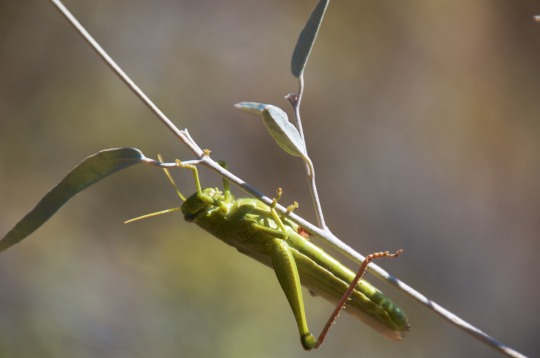
It has creepy looking eyes. See, here:
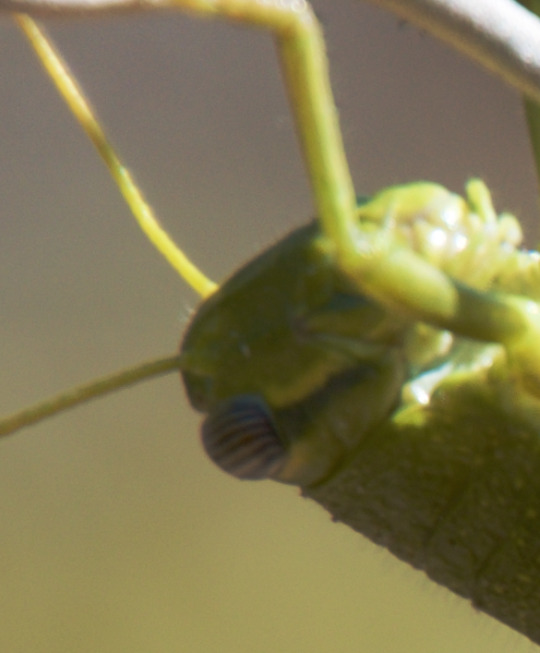
Now, some of the colors of the desert in the fall. Cattails, in the desert? Yep, those are the southern cattail, just as we see all over the US. The cattails are growing in a marsh area of the Preserve, where the water seeping from the ground all the time.
The last photo is a large, spreading honey mesquite tree. The seed pods dangling from the tree provided a significant source of nutrition for the indigenous people. The flour is naturally sweet (explaining the name, “honey mesquite.”) It has also been a medicinal plant. A few days ago, I posted a contrarian view of the trump wall, in which the writer suggested a wall of mesquite trees be planted instead of the concrete monstrosity. The tree is perfect for the desert (sips water instead of gorges on it).




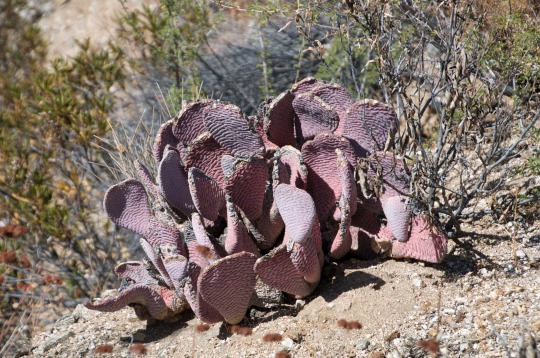
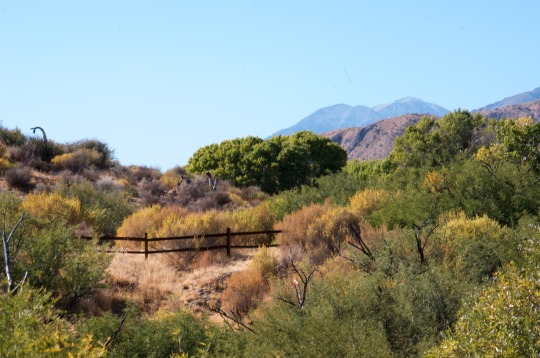
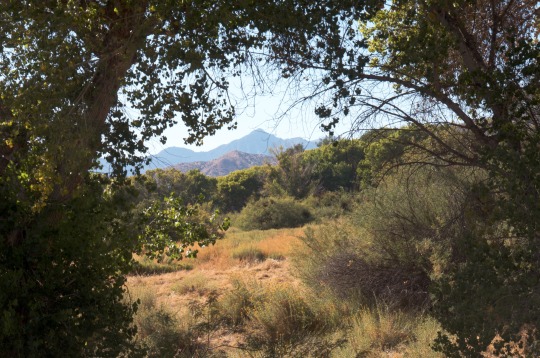
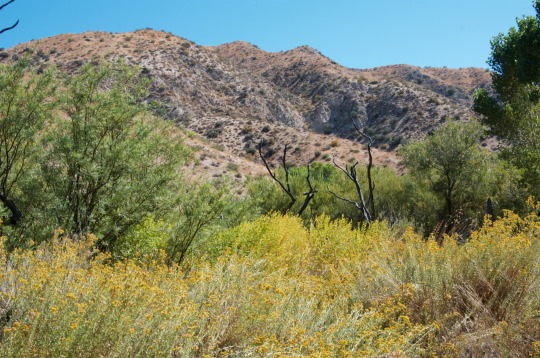
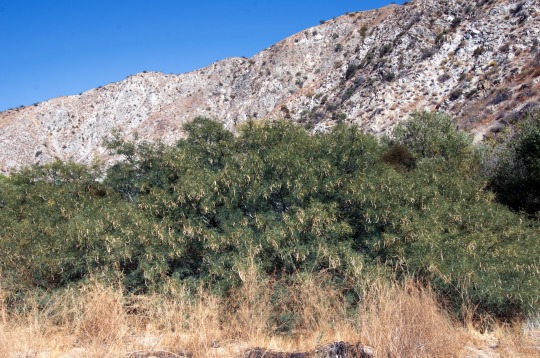
5 notes
·
View notes
Photo

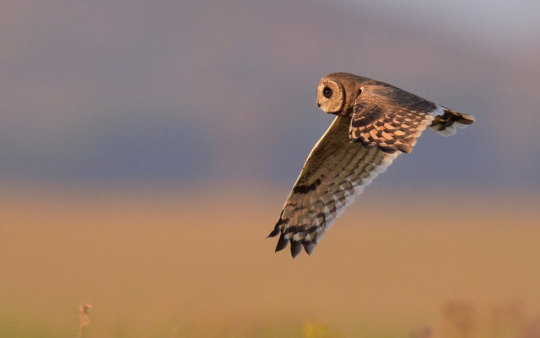

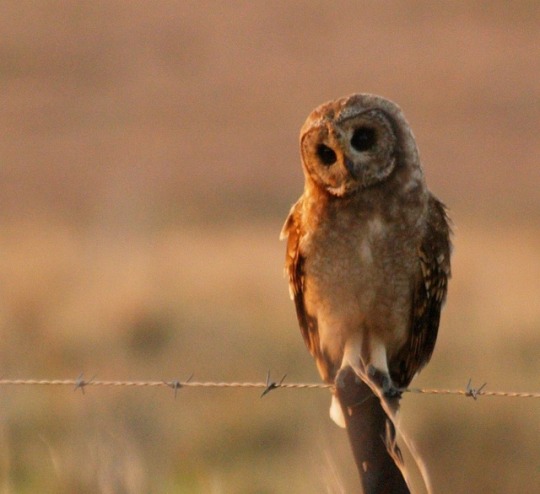

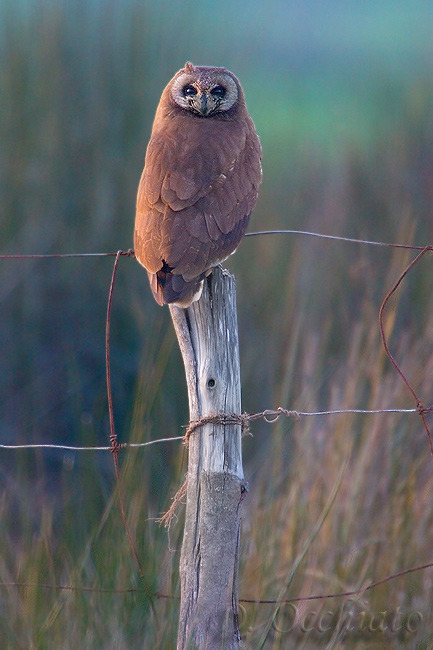

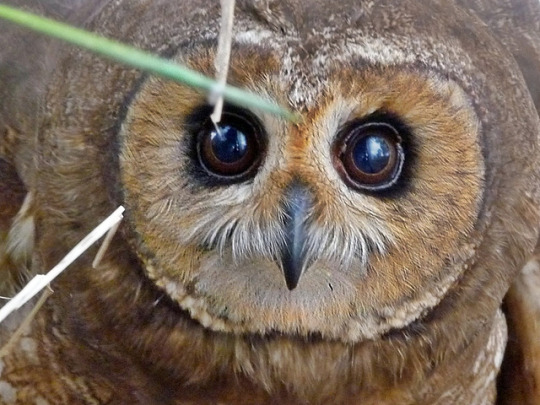

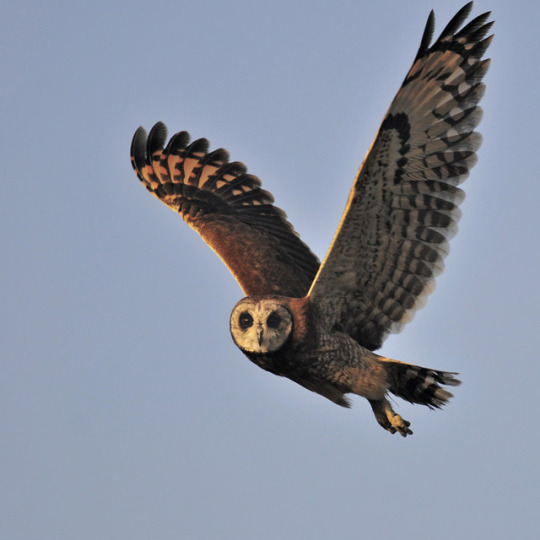
The Marsh owl (Asio capensis) is a medium/large species of raptor in the family Strigidae (Typical owls). Marsh owls are typically found singly or in pairs. They are usually nocturnal however they have been recorded to be active during early morning and late afternoon.The Marsh owl typically feeds on small rodents, insects and other small vertebrates. Prey items include mice, voles, rats, shrews, young hares, bats, birds up to the size of small ducks and doves, frogs, lizards, scorpions, beetles, grasshoppers.
Marsh owls are dark brown with a pumpkin shaped head with small 'ear' tufts.The facial disc is pale buff, with a distinct dark brown rim with buff speckles. There is a dark brown area around the eyes, which have dark brown irises. It's ear-tufts are earth-brown and quite small, often not visible, and set near the center of the forehead. The tail is dark brown, barred pale buff with a whitish tip.Tarsi are feathered pale tawny-buff and toes are covered with pale buffish plumes, leaving the dark brown tips bare. Claws are blackish. Males are generally paler then females, and there is some individual variation in tone. Body length is 12-15 inches and weight ranges between 225-485g.
The Marsh owl's habitat preference is open grassland, marshlands and short scrub, typically near/ on marshy grounds, levies or dams. Their preferred habitat tends to be vulnerable to destruction due to agriculture or overgrazing. Marsh owls prefer to nest on the ground and they have also been observed leave certain areas during drought stricken times.
Nesting usually occurs towards the end of the wet season or the start of the dry season. The owls are monogamous and often territorial, although they may nest in loose colonies. The nest is typically a hollow within a patch of grass, in which the grass or shrubs are pulled over to form a canopy, and the bottom is lined with dry foliage. The female will lay between 2-6 white eggs over the course of a few days. The incubation period is 27-28 days, and during this time the female will remain on the eggs and will be fed by her partner. After hatching the chicks will remain in the nest until about 18 days. They will fully fledge at 29-35 days and be fully feathered by 70 days
The Marsh owl has a fragmented distribution. They are common in grasslands in Southern Africa. Specifically central and southern Transval, the Free State, KwaZulu Natal and the Eastern Province. They are also found in Zimbabwe, on the Mashonaland plateau, and Botswana, in the Makgadikgadi lacustrine depression in Botswana. They have also been recorded on the floodplains on the Namibian coast and in isolated populations in Morocco and Madagascar.
277 notes
·
View notes
Photo
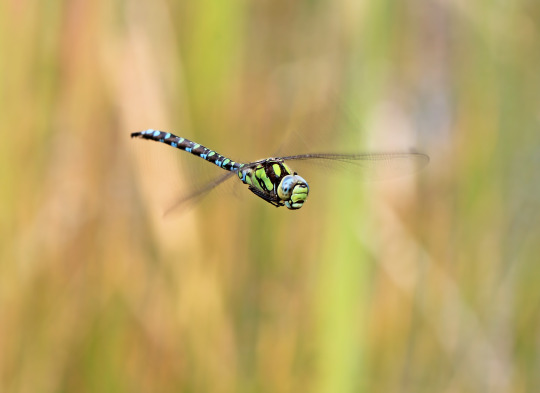

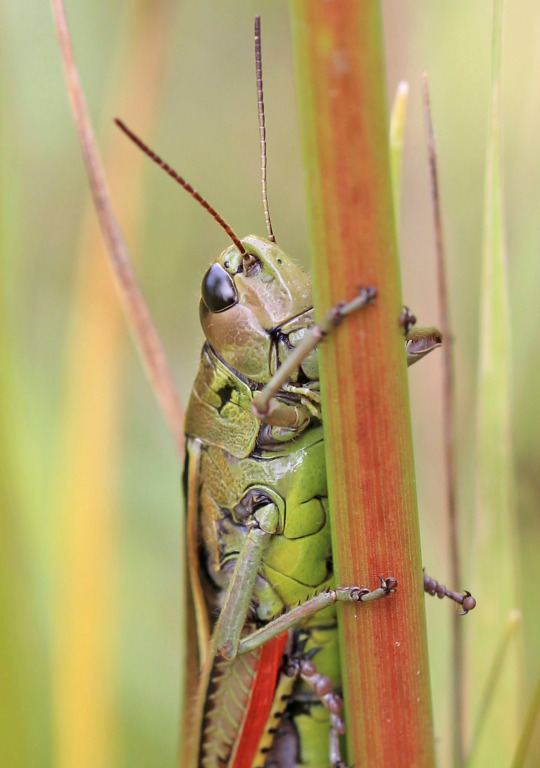
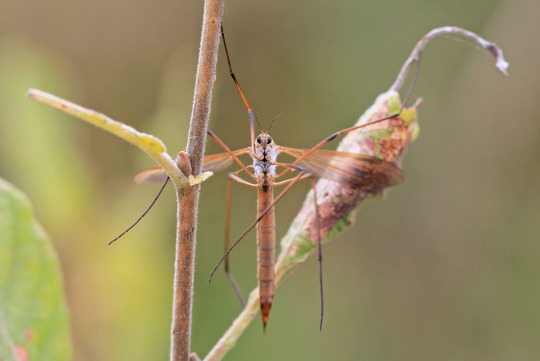
A few insect pictures from a long time ago. Stockholm, Sweden (August 30, 2013).
252 notes
·
View notes
Photo

December 9, 2017 - Marsh Tchagra or Blackcap Bush-shrike (Bocagia minuta)
These bush-shrikes are found in a scattered range around the grassy marshes of central Africa. Their diet is primarily large insects, such as beetles, grasshoppers, and dragonflies. They have adapted somewhat to human habitation and are often found in cotton fields and coffee plantations. Little is known about their nesting habits, but their breeding season is probably between February and June. Males display in flight while making a whistled call.
46 notes
·
View notes
Text



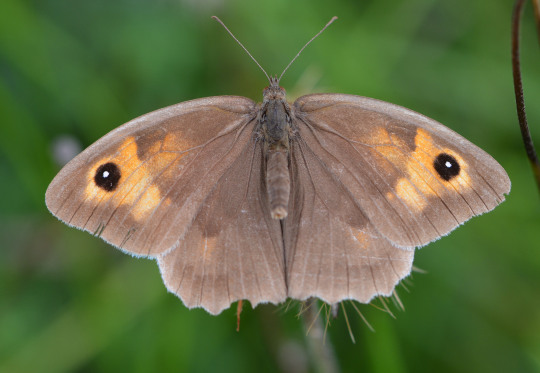



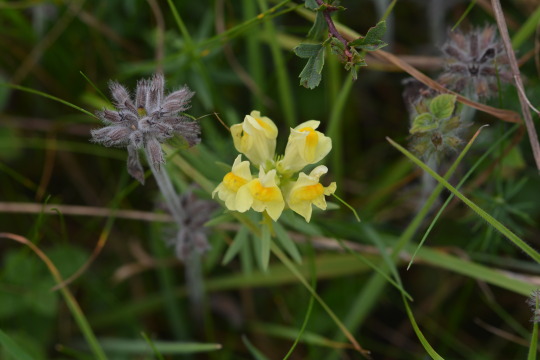


10th September 2023: Martin Down
Flora and fauna photos taken today in this set: 1. Hawthorn. 2. Devil's-bit scabious, I was captivated by swathes of this one of my favourite flowers. I'd only seen them in the New Forest before the ones I saw at Old Winchester Hill two weeks ago and it was great to see some here as it's the main caterpillar food plant of Marsh Fritillary one of the star butterflies of this site. We don't often come at this time of year so had never seen these flowers here before, it was great to see good numbers of them therefore. 3. A bright looking mossy rose gall. 4. A marvelous Meadow Brown, we got some smashing views of this enduring butterfly and remarked during the walk about how the species goes on from the start of summer until the end outlasting many others, they're a welcome constant over the summer. 5. Chaffinch that I heard calling well too. 6. Buttercups. 7. Some quite late lady's bedstraw which I made the most of. 8. Common toadflax another of my favourites. 9. Bee on bramble flower with blackberries and hawthorns nearby. 10. Black-eyed Susan in the emerging sun this evening when home.
Perfect for Wildflower Hour on Twitter's seed head theme tonight I liked zooming in on many flower seed heads on the walk including wild carrot, yarrow, hogweed, knapweed, creeping thistle, ragwort, marjoram and old man's beard. It did feel a bit like summer winding down when out and it was overcast here with the brown fields around, a place we normally visit when brimming with insects at the height of spring into summer (there were still a fair few about today of course), and a lot of the flowers had gone over (again, there were many still about though) but it was good to appreciate that they can still be beautiful after they flower. I saw the flowers of some of these too and centaury, eyebright, wild basil, dark mullein, pineappleweed, field/small scabious, hemp agrimony, pretty honeysuckle, ivy including some covered in bees which was nice to see, speedwell, self-heal and some poppies in the famous adjoining poppy field were other highlights. Rose hips, sloes, elder and privet berries were other fruit highlights. Small Copper again, Common Blue, Speckled Wood, Small White, Small Heath and a splendid fresh looking Peacock were other good butterflies to see. Veneer moth, Southern Hawker, horse fly, hornet, possible wasp, Long hoverfly, possibly the rare Large Marsh Grasshopper and spiders were other highlights. It was brilliant to see two Redstarts, what an autumn I'm having for seeing them at different places. Kestrel in the air, Magpie, vocal Woodpigeons, Blackcap, Whitethroat, Stonechat, Swallow, Skylark, Linnets, loads of colourful Goldfinches which was great to see and Great Tit were other standout birds. It was good to see bee in the garden on the Black-eyed Susan, Goldfinches out the front and Collared Doves out the back and fly before bed last night at home, with an epic Buzzard view on the way back from Martin Down.
#martin down#redstart#small copper#meadow brown#devil's-bit scabious#woodpigeon#whitethroat#photography#birdwatching#nature#outdoors#2023#september#summer#autumn#hawthorn berries#berries#seed heads#marjoram#yarrow#stonechat#earth#walk#walking#kestrel#grasshopper#collared dove#flowers#europe#weekend
5 notes
·
View notes
Video
Salt Marsh @ Tollesbury Essex by Adam Swaine
Via Flickr:
Wildlife is abundant in the 600 acres of rough pasture, borrowdykes, sea walls, wet flushes, pools and saltmarsh. Large areas of rough pasture suit small mammals such as field vole and pygmy shrew. In winter, they in turn attract hunting hen and marsh harriers and short-eared owls. Dry grassland on the slopes of the sea walls supports a wide variety of insects, including butterflies, bush crickets and grasshoppers. In spring spiny restharrow, grass vetchling, slender hares-ear and many other wild flowers can be found in ungrazed areas
#boats#house boats#creeks#tollesbury#walks#waterside#estuary#essex#estuaries#rivers#river bank#english rivers#nature lovers#nature#nature watcher#nature reserve#salt marshes#marshes#england#english#english villages#britain#british#EAST ANGLIA#seasons#Adam Swaine#2021#uk#uk counties#counties
0 notes
Text
Juniper publishers-Land Use Effects on Lake Ol’bolossat Watershed Conservation, Nyandarua Country
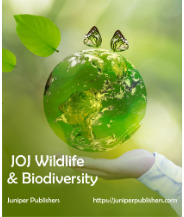
Abstract
Despite their importance, wetlands have remained unprotected and they are exploited beyond what they can endure. The main objective of the study was to establish the land use effects on conservation of the Lake Ol’Bolossat watershed. The study was conducted in 10 villages, by systematic random sampling of 60 households and purposive sampling of key institutions such as KWS, KFS, NEMA and KALRO. Household questionnaires were issued to sample households, while interviews were held to establish environment issues in the study area. Direct observation transects walks and photography revealed that there was human encroachment, crop and livestock production and quarrying in the basin. Lake and runoff water were analyzed for both physical and chemical parameters. The samples were analyzed for pH, Mn, COD, TDS, TSS, K, P, Nitrates, EC, Total Nitrogen and Ammonia.
The results showed that runoff water was polluted before it flowed into the lake. The concentration of minerals in lake water was lower than that of the runoff water, an indication that contamination originated from surrounding farms. Water usage and proximity from the lake were significantly different at 95% confidence interval, hence most members of the community near the watershed rely directly on lake. Interviews indicated that the wetland degradation such as water pollution was based on land utilization. The study established that watershed conservation is affected by land use by the neighboring communities. Agrochemicals (30%), clearing vegetation (7%), water abstraction (16%), quarrying (3%), land fragmentation (12%), population growth (11%), poverty (12%) and others (9%) impacted the lake negatively. Water abstraction, drying of bore holes and land use were significantly different at 95% confidence interval. It is recommended that conservation of the lake ought to be enhanced through community participation and other stakeholders to manage, restore and preserve Lake Ol’Bolossat catchment.
Keywords: Conservation; Land use; Water quality and Watershed
Go to
Introduction
Globally, the wetlands cover about 26% of the earth’s surface and in Kenya, they cover about 2-3% of her land surface, [1]. Seemingly small geographic extent, wetlands provide some of the most critical ecosystem services to many communities in the rural areas and are indispensable to the very survival, health and welfare of human beings and biodiversity. They are crucial in attainment of the MDGs and the vision 2030 goals. They control floods by soaking up and storing excess water [2]. The wetlands have been recognized as world heritage sites since the convention on wetlands was adopted in 1971 in Iranian city of Ramsar. Wetlands are areas of marsh, fen, peat, or water, whether natural or artificial, permanent or temporal, with water that is static or flowing, fresh ,brackish or salty, including areas of marine water, the depth of which at low tide does not exceed 6metres [3].
Wetlands are highly productive ecosystems being only second to the tropical rainforests. Wetlands perform many func tions that maintain the ecological integrity of the systems and provide many vital services that are important for the general public such as agriculture, tourism, industry, and biodiversity conservation, social economic and cultural activities. Kenya has a variety of wetlands that stretch from coastal and marine wetlands to inland freshwater lakes, rivers, dams and swamps as well as the saline lakes of the rift valley system, constructed wetlands in irrigation schemes and sewerage treatment systems and the mountain bogs, peat and glacier lakes (EMCA).
However, due to lack of effective management mechanisms and proper appreciation of their true worth, wetlands have been subjected to severe pressure and through rapid unsustainable activities, conversion and over- exploitation of their resources at an alarming pace. The pressures to wetlands have been exacerbated by catchment degradation and pollution leading to proliferation of invasive species. The results have been detrimental and even catastrophic in some areas of the country. For example, flash floods in western Kenya have become more common, severe and destructive as there are no wetlands to hold back any massive overland flow, leading to loss of property, destruction of infrastructure and damage to crops [4]. The Kenya government has recognized the importance of wetlands and their contribution to her gross domestic product .
The original inhabitants of the study area were Masaai pastoralists and the land belonged to the community as there was no individual land ownership. Crop farming was done on very small scale without use of chemicals. The pastoralists used livestock for meat and did not harm wild animals [5]. The rules were centered on the preservation of sacred areas for traditional rituals and not for commercial benefits [6]. Currently, the dominant community members are the Kikuyu and they have converted part of the wetland into agricultural farms Lake Ol’Bolossat is a high attitude wetland located in Satima escarpment where streams and springs that feed lake, flow from the Aberdare Ranges through Satima escarpments and pass across farms. The farming practices lead to Lake Siltation and landslides. Soils eroded from the neighboring farms reduces the water storage capacity of the lake. The lake water is moderately saline but fresh water from springs and streams dilute the water before it is discharged into Ewaso Narok River which exits the lake in the north. Kenya has an obligation to regulate land use for sustainability of wetlands, G.O.K (2009). However, through county environmental action plan (CEAP), National Environment Management Authority is making policies in collaboration with community to conserve the Lake.
Despite their valuable functions, wetland resources are often regarded as wasteland and are degraded through conversion to agricultural, settlement and industrial development, hence deterioration of the environment quality and little or no concern has been shown in conservation of the same. Sustainability of Lake Ol’Bolossat is threatened by the land use transformation resulting to loss of ecologically important species such as pollinators and biological control agents, [2]. The state of equilibrium between various entities has been disturbed and disharmony has resulted from lack of integration between conservation and utilization of natural resources, ACCORD (2002).
There is an urgent need, therefore, to step up management interventions in order to reverse the negative trends. The study sought to reveal the negative land use impacts in the area and hence a critical need for improved land uses planning to curtail further decline of Lake Ol’Bolossat. Although watershed degradation processes may occur without human interference, Stocking & Niamh (2000), accelerated degradation is commonly caused as a result of human intervention in the environment. Human induced factors causing deterioration of watersheds (are such as population growth and urbanization, poverty, overgrazing, pollution, biodiversity, erosion and land use changes) [6-8].
Socio-economic factors, including poverty, land fragmentation; low standard of living and earning are cited as drivers contributing to an increased risk of watersheds, [9] due to differences in land uses. Land ownership influences socio-economic and political position of different groups of people. Land issues and conflicts occurs and are related to poverty, inequality and land reformation processes. Contestations over land are most noticeable among the poor, who lack alternative means of supporting their livelihoods, UNDP (2006), therefore lack of resources conservation. Transition from forest to another agricultural use leads to significant impact on topsoil resistance and resilience [10]. For most wetlands, soil erosion by water is the most common process causing sedimentation. There is a distinct linkage between erosion and watershed conservation, and these are accelerated by deforestation, overgrazing, and the cultivation of unsuitable land [11].
Lake Ol’Bolossat watershed has been affected by anthropic disturbances [12]. In the headwater catchments of the central Kenya, a prevalent cause of land degradation is unplanned deforestation to allow for human settlements and subsistent agriculture .In the highlands of Nyandarua, the ubiquitous land-use changes are believed to be the major cause of the dwindling volumes of Lake Ol’Bolossat, which has recently been declared an endangered water body by the regional government of Kenya. So far, few studies have been carried out on the spatio-temporal lands cover changes possibly affecting the size of Lake Ol’Bolossat largely hence lack of reliable in-situ data. The largest herbivores in the basin are the hippopotamuses. The cattle grazing in the basin are abundant in the dry season. Hippopotamus population density is 3.6 animals per Km2. which is the highest in Kenya. The grazing activities influence the structure and composition of the natural vegetation which supports many herbivores and grasshoppers. Continued overgrazing maintains a low grass biomass. Trampling by animals affects ground nesting birds negatively. The other water animals include waterfowls, ducks and geese which are indicators of environmental quality. The areas with high concentration of different species of birds are also rich in diversity of other animal species as well.
Human activities affect the water availability by increasing storage capacity and by draining wetlands, [13]. The natural input to sub surface water is from rivers and streams. Basic household water requirement is estimated at solicitors/person/ day. The environmental usage is non-consumptive, but it reduces water availability for other purposes. Recreation water is mostly found in reservoirs and it is required in small amounts. The Ol’Bolossat catchment area includes springs and streams which feed the lake and support livelihoods, but the lake is characterized by freshwater scarcity supposedly due to climate change and high evapotranspiration [14]. Accumulated of organic matter and silt from the surrounding farmland has contributed to water pollution. The water level fluctuates from zero to 2.5metres depending on the rainfall, surface run off and seepage from the basin. There is domestic and agricultural pollution due to unsustainable farming practices which lead to occurrence of waterborne diseases [5].
According to the forest Act 2005, KFS has the responsibility of managing Kenyan Forest. The law allows for collaboration and participation of the local community living adjacent to the forest in conservation of the forest in question. In return the community earns a living through extraction of non-wood products. The use of agrochemicals has led to bioaccumulation in fish and pose health risk to human as well as fish death and causes extinction of some species. In 1992 the Fisheries department established that turbidity of Lake Ol’Bolossat was not suitable for fresh water fish though mud fish could do well in those conditions. Habitat loss and degradation ruin the fisheries through water abstraction, removal of vegetation for development and agriculture. Communally owned resources experience problems when being shared such as unequal sharing of resources, dissimilar priorities, location of the resource, dissimilar cultures and unequal representation in the management [15].
Generally, the region of Lake Ol’Bolossat has a history of colonial settlements when the major land uses were large scale livestock rearing and crop production. In the recent past however, the area has gone through considerable land use transformations under the national settlement fund trustees, resulting into significant land subdivision and fragmentation, especially after 1993. Presently, the majority living in the area are small scale farmers who grow subsistent crops and rear domestic livestock on land parcels ranging from 0.5 to 8 acres. The human population density of the area is approximately 202 per Km2.
General Objective
It was to establish the land use effects on conservation of the Lake Ol’Bolossat watershed.
The specific objectives were:
i. To identify the key land uses by the community affecting Ol’Bolossat catchment area conservation
ii. To analyze the water quality of the lake
iii. To suggest the possible preventive and resolution options for the conservation of the watershed.
Research Hypothesis
The land uses in the study area do not affect lake Ol’Bolossat conservation
i. All land uses in Ol’Bolossat catchment area are not causing toxicity.
ii. The conservation activities in the study area are not affected by land uses.
iii. There are no preventive and resolution options for land use effects in Ol’Bolossat catchment area.
Go to
Research Methodology and Materials
Study Site
Lake Ol’Bolossat is bordered by Ndaragwa, Ol kalou and Ol joro orok sub counties. It is situated in a wedge-shaped Rift valley floor sloping eastwards and northwards, known as Ongata Pusi. Lake Ol’Bolossat is approximately 195 Km north of Nairobi. It lies between latitudes 0o 09’S and longitudes 360 26’E in Nyandarua county in the central part of Kenya (Figure 1). The lake has a surface area of about 43Km2 and lies at an average altitude of 340M above sea level. The entire catchment area of Lake Ol’Bolossat, covers 4800Km2, encompassing Nyandarua ranges, Satima Escarpment and Ndundori Hills, NEMA (2007). The water flows northwards through Thompson Falls into the northern part of Ewaso Nyiro River. In the lake basin it is dominated by vertisols, NEMA (2007).
There is seasonal inflow of water from streams in the eastern side and there are underground springs that replenish the lake in the west. The lake is fed by streams from Satima escarpments on the eastern side. There is seasonal water recharge in the south and the lake supplies water to river Ewaso Nyiro in the north NEMA, (2007). The mean annual rainfall of the area is about 980mm and increasing southwards and westwards. Rainfall is bimodal, with long peaks between April and June and the shorter peaks between October and November. The mean temperature is 23.50C with little monthly variations.
Methods
Field research was conducted between November and December 2015. The research methods used included actual sampling and laboratory analysis of Lake Ol’Bolossat water and runoff water. A questionnaire, informal discussions, direct observation and focus group meetings were used to explore land uses activities and farmers’ perceptions of effects related to land uses.
The samples, of both lake Ol’ Bolossat and runoff water, were collected during morning hours (650F, mostly cloudy, wind, N at 4mph and humidity 100%) and evening hours (600F, light rain showers, wind, NE at 0mph and humidity 100%), of the rainy season of the project area.
Lake Ol’Bolossat and runoff water samples
Water samples were collected from different selected points in the lake and other samples from runoff flowing towards the lake. The following assumptions were made during water sampling:
i. Water samples would adequately represent the situations on site
ii. Sampling during the morning and evening hours would cater for variation in pollution
iii. A minimum of two sampling points per site (lake and flowing runoff) in different hours would take care of spatial variation in pollution.
The samples were transported to the upper kabete laboratory (UON) in 500ml plastic bottles. At the upper kabete laboratory (UON), a general water characterization was carried out following procedures described in a manual of standard methods for examination of water samples [16]. The parameters studied in clude nutrients ( Nitrates, Phosphates and Potassium), pH, Electrical Conductivity(EC), Total Suspended Solids, Total Dissolved Solids, Potassium, Manganese and Chemical Oxygen Demand (COD). The water samples collected contained particulate organic matter, requiring pretreatment or digestion before spectroscopic analysis. The water samples were digested using 5ml nitric acid (HNO3) for testing phosphates and 3.5ml sulphuric acid for testing Chemical Oxygen Demand (COD). The sample was brought to a slow boil and then evaporated to almost dryness 9 lowest volume possible-about 15 to 25 ml) on a hot boiling tube. Heating was continued until digestion was complete which was indicated by a light colored clear solution, followed by Flame Atomic Absorption Spectrophotomer (FAAS).
Land use and their effects Sampling, on Watershed Conservation
Since Lake Ol’Bolossat is narrow and lies in a north-south direction, it appears to form boundary between west and east. To assess the community perception of impacts associated to land use on wetland, a survey was conducted in 5 villages, 30 households respectively on both eastern and western side of the lake using individual household questionnaire. The sample size was randomly selected systematically, using an interval of twenty based on how they lie in the basin and near the lake. Purposive sampling of institutions was used to gather information from officers in NEMA, KALRO, KFS and KWS about the land use around the watershed and their effects. Interviews were used to collect relevant information from key institutions and conservation groups. Observations and photographs collected information guided by checklist. Data collected from the FGD and questionnaires was treated with utmost confidentiality.
Data Analysis and Presentation
Data collected was sorted, organized, conceptualized, refined and interpreted using methods drawn from the constant comparative analysis techniques. The strategy involved comparing data, some of which were similar and others different in order to develop conceptualizations of the possible relations between various pieces of data. Data was analyzed using Statistical Package for Social Sciences (SPSS) software and excel. Various data sets such as land uses, quarrying, sources of income and other variables were fed to the package. This information was generated in form of percentages and presented using tables, graphs and charts, upon which conclusions and recommendations were based on.
Go to
Results and Discussion
(Figure 1) shows gender of respondents in percentage. The household interviews revealed that there was almost equal gender distribution since the sample comprised of 58%, females and 42% males as shown in Figure 1 below. This gender distribution was attributed to the fact that the study area is relatively newly settled with land being occupied by both genders as landowners. Gender empowerment and promulgation of Kenyan constitution 2010 contributed to the almost equality in gender distribution. According to [17], watersheds and gender has taken a proactive approach to women’s greater involvement in water management. (Table 1) From Table 1 participants had their ages distributed from 20years old to over 52 years old. For easy presentation, ages were grouped into classes of intervals of 15 years. It was established that majority were aged between 20 to 35 years, while the class of above 52 had lower frequency. This was as a result of unemployment of youths therefore involving themselves with activities such as quarrying and subsistence fishing in the lake. Most of them who were involved in conservation complained that they do not find any tangible benefits from their conservation efforts (Figure 2).
Literacy levels of formal education considered in this study area were primary, secondary and tertiary education. Most of the respondents in the study area had secondary level of education with frequency of 66% as shown in Figure 2. This ascertains that most of the residents have formal education and it is expected they understand all those activities that contribute to degradation within the basin and hence they are expected to practice the possible conservation measures. Low levels of education and high levels of illiteracy are usually associated with little knowledge on the importance of conservation and hence little or no adoption of the various recommended conservation methods. Ignorance is also associated with illiteracy whereby, due to low levels of education residents are ignorant of the recommended conservation measures as highlighted by the government policies on catchment conservation (Table 2). Education level and gender were not significantly different at 95% confidence interval Table 2.
Therefore, the two variables did not affect each other, meaning the respondents had knowledge of the conservation of the lake irrespective of their education level and gender. Figure 3 shows different sources of income for the participants. Most people in this area were farmers i.e. mixed farming and crop production (22% and 3% respectively). This was a result of benefits of wetland supporting agriculture such as water abstraction, forage for the animals. As these people intensively got involved in farming it was established that a great proportion (3%), also did quarrying around the basin. However, accessibility of wetland resources made most members of the community to rely on watershed for their livelihood. The survey also established that the natures of daily activities undertaken by the respondents were also contributing to the catchment degradation (Plate 1). As these people intensively got involved in farming it was established that a great proportion (3%), also did quarrying around the basin. This was an evidence of unemployment in the country. However, accessibility of wetland resources made most members of the community to exploit the resources for income.
The study established that the farming methods embraced within the study area were intensive and resulted to topsoil eroded during runoff causing gullies within the catchment (Plate 2). This erosion has also been evident on the bounders of the lake causing sedimentation and siltation hence reducing its water holding capacity. This is evident as majority of the respondents complained that the lake water usually changed color during rain seasons as compared to dry spells. Settlement and the development of agriculture can enhance erosion on the surfaces of the watersheds [18].
Go to
Factors Contributing to Lake Ol’Bolossat Degradation
The study established that various human activities had led to degradation which included agrochemicals, clearing vegetation, water abstraction, quarrying, land fragmentation, poverty, population growth and other combined problems (Figure 4).
According to respondent’s response on what they felt caused degradation 30% said that excessive use of agrochemicals was the major cause of degradation as it had impact on water quality due to sphere erosion. 16% of the respondents were of opinion that water abstraction was also a threat to the lake riparian ecosystem, which was practiced along the lake. Excessive agrochemicals were as a result of intensive farming from the surrounding farms. Several studies have demonstrated strong associations between agricultural land use and alteration to wetlands [19]. In addition to nutrient transport, the loss of suspended sediment in agriculture runoff is a major threat to water quality as particles may carry pesticides, pathogens and other pollutants [20].
Agricultural (agro ecosystem) sources of disturbance can increase loading of total nitrogen and phosphorous which affect watershed [21,12]. Land was not used according to its suitability. Current patterns of agriculture will continue to result in damage to both quantity and quality of water resources [22]. Conversely, watershed with abundant human activities that increase the export of nutrients will more rapidly degrade water quality in the receiving lake [23]. Population pressure in natural resources remains a key driver [24]. The responses and observations indicated that the community near the wetland is unprepared for dry periods (Table 3). Hence most of them relied more on wetland for water supply. They have no storage facilities for harvesting rainwater, hence they fetch water from water points that they share with livestock.
Water usage and proximity from the lake were significantly different at 95% confidence interval; hence most members of the community near the watershed rely directly on lake (Table 4). Most of respondents near the Lake were dependent on it for source of water therefore most of them did not have water storage facilities. Hence, affecting Lake’s capacity to function due to excessive abstraction of water.
Plate 3 shows irrigation in the eastern side contributed to pollution of the lake. This was as a result of poor irrigation methods which involved excessive water supply on the farm hence resulting to water overflow. However, leading to excessive abstraction of water from the Lake.
Land Use
The survey established that the major land tenure activity was agriculture i.e. mixed farming, crop production and livestock production. Water abstraction, drying of bore holes and land use were significantly different at 95% confidence interval (Table 5). Therefore, land use contributed to watershed degradation as a result of excessive water abstraction for agricultural activities.
Of the respondents 14.7% were involved in crop production, as compared to 51.7% who used their land for both crop and animal production (Figure 5). This land use ventures were found to seriously affect the wetland for some farmers grazed on the riparian zone of the lake (Plate 4) hence affecting the water quality and quantity. The activities on the land surrounding Lake Ol’Bolossat were attributed by the ecosystem services provided by the watershed. Most of them who were involved in conservation complained that they do not find any tangible benefits from their conservation efforts.
Livestock grazing practices can cause erosion and bank destabilization as shown in Plate 4 [25]. However, eutrophication can be as a result of nutrients accumulation from livestock manure. According to the sub county agricultural officer the type of land tenure was also a contributing factor to the high rate of destruction on the catchment (Figure 6) and this required an urgent attention in order to address it. The survey established that 51.7% of the land within the catchment was privately owned as a result owner had a higher stake in determining the type of farming to be undertaken. This affected the wetland and fragile ecosystem.
Water Quality
Water quality is a term used to describe the chemical, physical and biological characteristics of water, generally in terms of suitability for a particular use. The respondents indicated that crop production was insufficient and intensive cultivation has therefore been employed in order to increase crop production by use of pesticides and chemical fertilizers. The agricultural practices have negative impacts on the wetland by polluting water. Water pollution can interfere usage of a wetland. The water quality in the catchment area has declined over years. For instance, there are cattle dips near the lake. Surface runoff was collected from water channels flowing towards the lake at different day hours. Plate 5 shows cattle dip which could be a source of pollution through chemical leaching and runoff, therefore contaminating the watershed. The lake water was found to be highly contaminated and unfit for domestic use. The concentration of nitrates, total suspended solids and total dissolved solids in the lake water was lower than that of runoff water (Table 6). This indicates that the concentration originated from activities associated with the land use from the surrounding such as quarrying, intensive farming, livestock grazing (Plate 1 & 2) but once it enters the lake it’s diluted by clean water from streams and springs. Livestock grazing practices can cause erosion and bank destabilization, Borman et al. [20]. Freshwaters are degraded by increasing inputs of silt, nutrients and pollutants from agriculture [26]. Moreover, the irrigation in the eastern side curtails flow of water into the lake, therefore contributing to pollution of the lake. The ground water is slightly saline due to the nature of rocks [27-30].
Go to
Conclusion
The study did an in-depth research and established that there was serious degradation; this destruction has negatively impacted the lake thus leading to water decrease on the catchment. The lake has been unable to perform its functions efficiently. This has allowed grazing in the basin of the lake. Farming has also been going on along the riverine which has led to loosening of top layer of the soil which is eroded during runoff on rainy seasons. Moreover, water quality has been affected negatively. Privately owned land has been used for intensive cultivation and to some extent abstraction of water for irrigation hence leading to decline in water quantity. The study concluded that Lake Ol’Bolossat requires urgent measures to restore, conserve and manage the watershed.
Go to
Recommendations
The study suggests various strategies towards restoration, conservation and management of Lake Ol’Bolossat. Sustainable land use practices and farming technologies such as organic farming to minimize agro pollution and drip irrigation to avoid water wastage. Oxidation ponds could be constructed to deal with nutrients in the runoff water from farms; nutrients flow into the lake will be reduced. The local community should be sensitized on the various advantages of conservation of the watershed through capacity building by training conservation groups and Rainwater harvesting should be improved in order to provide alternative sources of water for irrigation instead of abstracting direct from the lake. Riparian reserves and buffer zones need to be provided to remove people on the catchment and allow restoration, such as massive livestock grazing. However, the Water resource management authority needs to protect Lake Ol’Bolossat from degradation by locating the cattle dips far away from water sources in order to reduce pollution.
Go to
Acknowledgement
I would like to take this opportunity to thank everybody who contributed to enabling me to write this research proposal successfully, more specifically, my supervisor Dr. G.N. KARUKU, my classmates and all my friends and family who assisted me in one way or another. Most of all I would like to thank the Almighty God for seeing me through this proposal writing process and guiding me every step of the way. It is because of His mercies that I can come this far.
To read more articles in JOJ wildlife and biodiversity
please click on: https:// juniperpublishers.com/jojwb/index.php
For more open access journals in juniper publishers
0 notes
